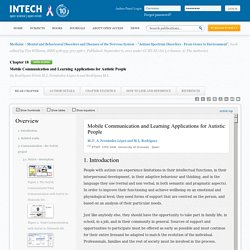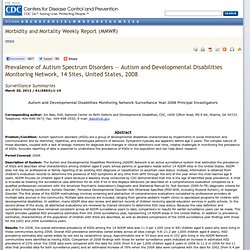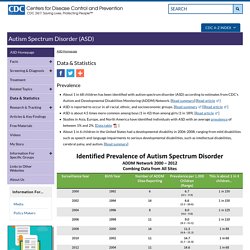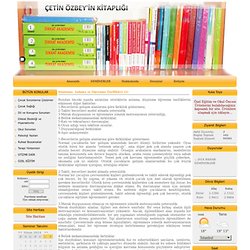

Se connecter à Facebook. Sc@ut: developing adapted communicators for special education. Volume 1, Issue 1, 2009, Pages 1348–1352 World Conference on Educational Sciences: New Trends and Issues in Educational Sciences Edited By H.

Uzunboylu and N. Cavus Abstract This paper outlines our experience in the development of augmentative and alternative communication systems (AACS) and their application in Special Education schools. Keywords Disability; User impairments adaptation; Sign language; Augmentative and alternative communication systems; Mobile devices References Albacete et al., 1998P.L. Mobile Communication and Learning Applications for Autistic People. M.J1, A.

Fernández-López and M.L. Rodríguez 1. Introduction People with autism can experience limitations in their intellectual functions, in their interpersonal development, in their adaptive behaviour and thinking, and in the language they use (verbal and non verbal, in both semantic and pragmatic aspects). Just like anybody else, they should have the opportunity to take part in family life, in school, in a job, and in their community in general. Technologies can help autistic people and their social environment particularly in the sphere of education and communication.
Autism and tech. Otizmde bilimsel dayanaklı uygulamalar. Autismpdc.fpg.unc.edu. National Autism Center. National Autism Center - Affiliates & Model Programs. Özürlüler ile İlgili Yasa, Yönetmelik ve. Prevalence of Autism Spectrum Disorders — Autism and Developmental Disabilities Monitoring Network, 14 Sites, United States, 2008. March 30, 2012 / 61(SS03);1-19 Autism and Developmental Disabilities Monitoring Network Surveillance Year 2008 Principal Investigators Corresponding author: Jon Baio, EdS, National Center on Birth Defects and Developmental Disabilities, CDC, 1600 Clifton Road, MS E-86, Atlanta, GA 30333.

Telephone: 404-498-3873; Fax: 404-498-3550; E-mail: jbaio@cdc.gov. Abstract Problem/Condition: Autism spectrum disorders (ASDs) are a group of developmental disabilities characterized by impairments in social interaction and communication and by restricted, repetitive, and stereotyped patterns of behavior. Period Covered: 2008. Description of System: The Autism and Developmental Disabilities Monitoring (ADDM) Network is an active surveillance system that estimates the prevalence of ASDs and describes other characteristics among children aged 8 years whose parents or guardians reside within 14 ADDM sites in the United States.
Introduction Methods Study Sites Case Ascertainment Descriptive Characteristics. Data and Statistics, Autism Spectrum Disorders - NCBDDD. Key Findings: Prevalence and Characteristics of Autism Spectrum Disorder Among 4-Year-Old Children( Data from a CDC pilot project, published in the Journal of Developmental and Behavioral Pediatrics, suggest that progress has been made in identifying children with autism spectrum disorder (ASD) at younger ages.

(Published December 9, 2015) Key Findings: Autism symptoms among children enrolled in the Study to Explore Early Development( A new analysis looking at autism spectrum disorder (ASD) symptoms among young children enrolled in CDC's Study to Explore Early Development (SEED). (Published June 6, 2015) Key Findings: The association between assisted reproductive technology and autism spectrum disorder( New studies on the relationship between ART and autism. (Published March 20, 2015) ADDM Network update( New CDC funding will expand knowledge about children with autism spectrum disorder. Magazine-q4-2005. Generic - Search results. Otistik Çocukların, Düşünme, Anlama ve Öğrenme Özellikleri (2) Bundan önceki yazıda anlatılan otistiklerin anlama, düşünme öğrenme özelliklerini etkileyen diğer faktörler;1-Becerilerin gelişim alanlarına göre farklılık göstermesi,2-Taklit/ becerileri model almada yetersizlik,3-Merak duygusunun ve öğrenmeye yönelik motivasyonun yetersizliği,4-Bellek mekanizmasındaki farklılıklar,5-Katı ve tekrarlayıcı davranışlar,6-Oyun azlığı veya tekdüze oyunlar,7-Duyusal/algısal farklılıklar8-Aşırı anksiyetedir. 1-Becerilerin gelişim alanlarına göre farklılıklar göstermesi:Normal çocuklarda her gelişim alanındaki beceri düzeyi birbirine yakındır.

Oysa otistik birey bir alanda “yetenek adacığı”, ama diğer pek çok alanda yaşının çok altında beceri düzeyine sahip olabilir. Örneğin arabaların markalarını, modellerini tanıma konusunda son derece başarılı olurken, araba resmi çizemeyebilir veya sabah ne yediğini hatırlamayabilir. Temel pek çok kavramı öğrenmekte güçlük çekerken, okumada çok iyi olabilir.
Alev GirliYardımcı Doçent Doktor. Çocuklarda Otizm ve Asperger Sendromu.